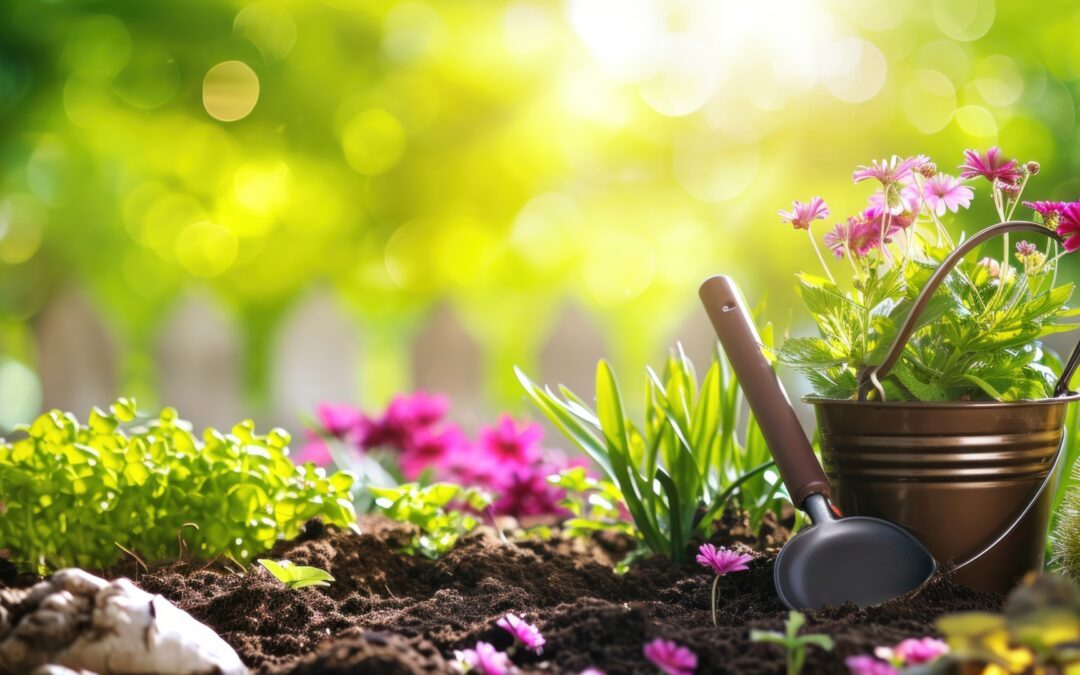July in Colorado Springs is a pivotal month for gardeners. With summer in full swing, our gardens are bursting with blooms, yet also facing the challenges of heat, hailstorms, and dry spells. This is the perfect time to take stock of your outdoor spaces and give your plants the mid-summer care they need to thrive through the hottest weeks ahead.
Here at Affordable Services Colorado Springs, we know how unique gardening can be in our beautiful yet unpredictable climate. That’s why we’ve put together this July garden care checklist to help you keep your landscaping healthy and vibrant, naturally and sustainably.
Deadhead and Prune for Continued Blooms
Many flowering plants in Colorado Springs gardens are still putting on a show in July. But if you want them to keep blooming into August and beyond, now is the time to deadhead and prune.
-
Deadhead spent flowers: Regularly removing faded flowers encourages many annuals and perennials to produce more blooms instead of going to seed. Focus on plants like petunias, coneflowers, daisies, and roses.
-
Prune lightly: If some perennials are starting to look leggy, give them a light trim to promote bushier growth and keep your beds looking tidy. Avoid heavy pruning, which can stress plants in the summer heat.
-
Shape shrubs: Many ornamental shrubs benefit from a little mid-season shaping. Trim away wayward branches and any dead or damaged wood to improve air circulation and maintain form.
Remember, always use clean, sharp tools to make precise cuts, and work during the cooler parts of the day to avoid additional stress to your plants.
Refresh Your Mulch
In our dry and often windy climate, mulch is one of your garden’s best defenses. It keeps soil temperatures more even, retains precious moisture, and even helps reduce weeds—naturally.
-
Inspect and replenish: Check your garden beds and add fresh mulch where it’s thinned out or decomposed. Aim for a 2–3 inch layer around flowers, shrubs, and trees.
-
Keep it natural: Use organic mulches like shredded bark, wood chips, or pine needles. These break down over time and enrich your soil.
-
Avoid direct contact with stems: When applying, keep mulch a few inches away from the base of plants to prevent rot and pest problems.
A well-mulched garden not only looks neat but also protects your plants during the peak heat of July and August.
Protect Plants from Heat and Sun
Colorado Springs summers are known for their intense sun and wide temperature swings. Mid-July heat waves can be particularly harsh on young or tender plants.
-
Provide afternoon shade: Use lightweight shade cloths or garden umbrellas to shield delicate plants during the hottest part of the day.
-
Water wisely: Water deeply and less frequently to encourage strong root systems. Early morning is the best time to water, reducing evaporation and allowing foliage to dry before evening.
-
Check soil moisture: Even with mulch, hot days can dry out soil quickly. Use your finger to test the soil 2–3 inches down; if it feels dry, it’s time to water.
These simple steps can help your garden withstand summer’s extremes and reduce stress on your plants.
Prepare for Hail and Storms
July is also hail season in the Pikes Peak region. While there’s no way to prevent hail completely, you can take precautions to minimize damage.
-
Have covers ready: Keep breathable row covers, sheets, or even lightweight tarps on hand to quickly shield garden beds when storms are forecast.
-
Protect potted plants: Move containers under a covered porch or into a garage when hail is expected.
-
Support taller plants: Staking tall flowers and vegetables helps prevent them from being knocked down by wind and hail.
After a storm, check your plants for broken stems or damaged leaves, and trim away any severely torn or diseased growth to encourage recovery.
Manage Weeds the Natural Way
Weeds can quickly take advantage of summer conditions, stealing water and nutrients from your garden. But there are plenty of non-toxic ways to keep them in check.
-
Hand-pull regularly: The best way to control weeds in July is to pull them before they flower and set seed. The warm, soft soil after watering makes this task easier.
-
Use physical barriers: Lay down landscape fabric or use natural mulches to smother weeds and reduce their spread.
-
Maintain edges: Keeping clean edges around beds and paths helps reduce encroachment and keeps your landscape looking polished.
Consistent, chemical-free weed control not only benefits your garden but also keeps your soil, air, and water safe for family, pets, and wildlife.
Encourage Pollinators and Wildlife
Even in the midst of summer, you can make your yard a welcoming place for beneficial insects and birds.
-
Leave some flowers uncut: Let a few plants go to seed to attract finches and other birds.
-
Provide water: A shallow dish or birdbath with fresh water helps pollinators and birds stay hydrated during dry spells.
-
Plant natives: If adding new plants this month, choose drought-tolerant, native species that support local wildlife and thrive in our region’s unique conditions.
A thriving ecosystem adds beauty to your garden and supports the natural balance of your landscape.
Let Us Help You Care for Your Garden
Mid-summer can be a busy time in the garden, but a little extra attention in July goes a long way toward keeping your outdoor spaces healthy and beautiful through the rest of the season. By pruning, mulching, and protecting your plants now, you can enjoy vibrant beds and happy pollinators even during Colorado Springs’ hottest weeks.
At Affordable Services Colorado Springs, we’re proud to help our neighbors maintain and enhance their landscapes—naturally and sustainably. If you’d like help with yard clean-up, mulch application, or preparing your garden beds for the next season, give us a call or send us a message today. Our team is here to make your outdoor spaces shine.
Ready to keep your garden looking its best this summer? Contact us for a free estimate or subscribe to our seasonal newsletter for more local tips and inspiration.






